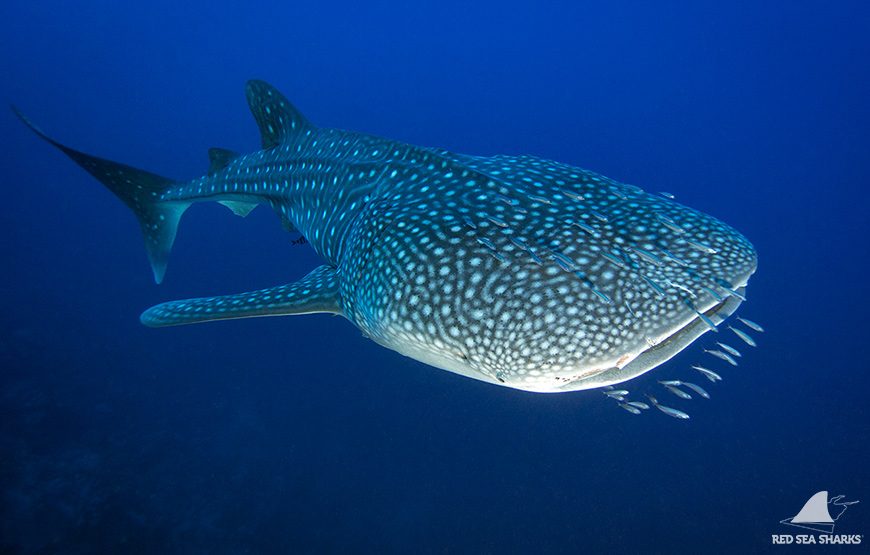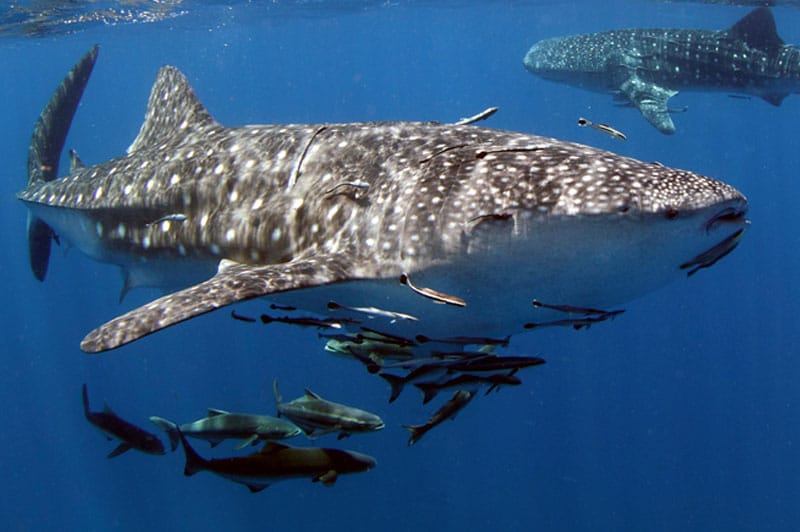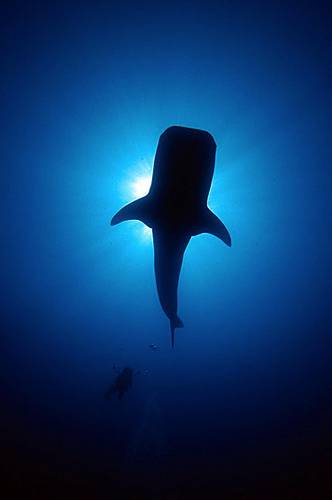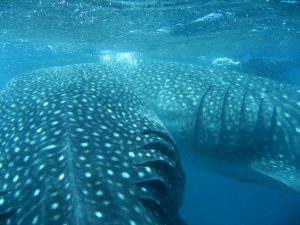The World Of Whale Sharks, Everything You Ever Wanted to Know

The World of Whale Sharks
- Whale Sharks aren’t a whale
- The Whale Shark is the largest fish in the world
- The largest confirmed individual had a length if 12.65 metres (41.50 ft) and a weight of more than 21.5 metric tons (47,000 lb), and there are unconfirmed reports of considerably larger whale sharks. Claims of individuals over 14 metres (46 ft) long and weighting at least 30 metric tons (66,000 lb) are not uncommon
- Whale Sharks have very distinctive markings, with their dark greyish-blue black and sides being covered in yellow blotches
- Whale Sharks have been tracked travelling for thousands of kilometres
- Whale Shark has 300 tiny teeth in its mouth, but the function of these teeth is unknown
- The Whale Sharks are found in warm, tropical waters
- They can live up to 150 years old
- Like human fingerprints, whale sharks have a unique of spots which allow individual sharks to be identified. By taking photos and cataloging them
The whale shark is the biggest fish and shark in the world. These gentle marine giants roam the oceans around the globe, generally alone. However, large numbers of whale sharks often gather in areas with abundant plankton food-making them prime tourist attractions. The distribution of whale sharks indicates the presence of plankton and the overall heath of our oceans. It is mainly solitary in nature, but it can also be found in groups of more than 100 individuals. Despite its impressive appearance, it is harmless to humans. Scuba divers who have clambered over its body have been unmolested-however we are very anti this kind of behavior!
Status: Vulnerable
Length: 40 feet
Diet: Plankton, small fish


History
Whale Sharks were first discovered in the 1800s and are found throughout the tropical oceans, but relatively little is know about their behavior.
Whale Sharks were long thought to be oviparous. An egg measured 36cm ling was found in the Gulf of Mexico in 1953, which was thought to be a whale shark egg. Recently, it was discovered that pregnant females carry their pups, therefor, providing that whale sharks are ovoviviparous, giving birth to live young. New-borns are over 60cm long. It has been calculated that whale sharks reach sexual maturity at the age of 30 and may live to be 100-150 years old.
Threats
Whale Sharks are highly valued on international markets. Demand for their meat, fins and oil remains a threat to the species, particularly by unregulated fisheries. They are victims of bycatch, the accident capture of non-target specials in fishing gear. And Whale Shark tourism presents a threat to the species as it can interrupt their feeding and sharks can be injured by boat propellers.
Whale Sharks have been fished throughout their range, and their flesh is highly valued in some Asian markets. The recent increase in the demand for shark-fin soup threatens this soecies; in 1999, a large whale shark fin sold for around £11,000. Although little is known about the ecology of this species, it is likely to be long-lived with a slow reproduction rate, making populations particularly vulnerable to exploitation. Where these shy creatures regularly come close to shore, they have become important tourist attractions, but the impact of shark-watching tours is at present poorly understand.


Appearance
The Whale Shark’s mouth can reach up to 5 feet in width, and contains hundreds of rows of teeth. A Whale Shark has 5 sets of gills, all are which very large.
The largest of the sharks, it is well proportioned and beautifully streamlined even with its large, broad, flat head. Its large mouth, which can be up to 1.5m (4.9ft) wide, extends side to side the full width of the heads. Unlike most sharks in which the mouth is on the under surface of the head and set well back on the snout, the whale shark’s mouth is almost at the very front of its head.
Colouration patterns vary from one shark to another. The under body of the Whale Shark is either white or cream. The sides and back have a darker base colour with shades of blue, grey and brown. Vertical and horizontal lines of cream or white create a checkerboard appearance with round spots in the squares giving the impression of checkers on a board ready for play. The dark shaded fins are irregularly marked with round, light coloured dots.
The Best places in the World to go diving with Whale Sharks
Check out our holiday website for your chance to dive with Whale Sharks and many other marine animals
- Ecuador, Galapagos, Puerto Ayora
- Maldives, Ari and Baa Atolls
- Mexico, Isla Mujeres
- Australia, Ningaloo Reef
- Belize, Belize Barrier Reef
- Mozambique, Tofo
- Philippines, Donsol Bay
- Seychelles, Mahe
- Thailand, Richelieu Rock
- Honduras, Utila Bay
- Djibouti

Adopt a Whale Shark
Help support the WWF, and make a stop to selling Whale Sharks
